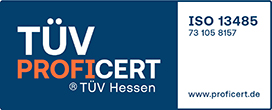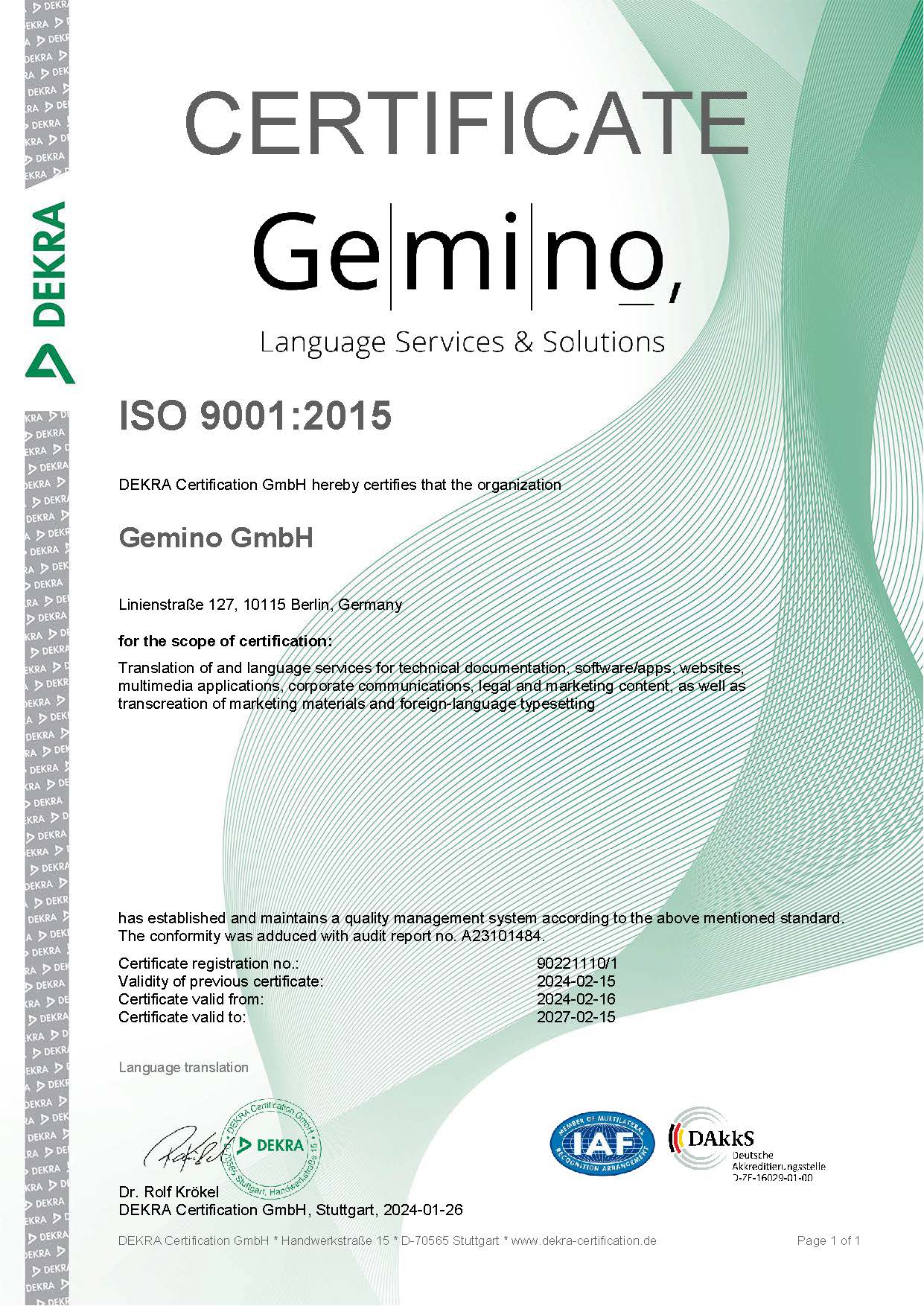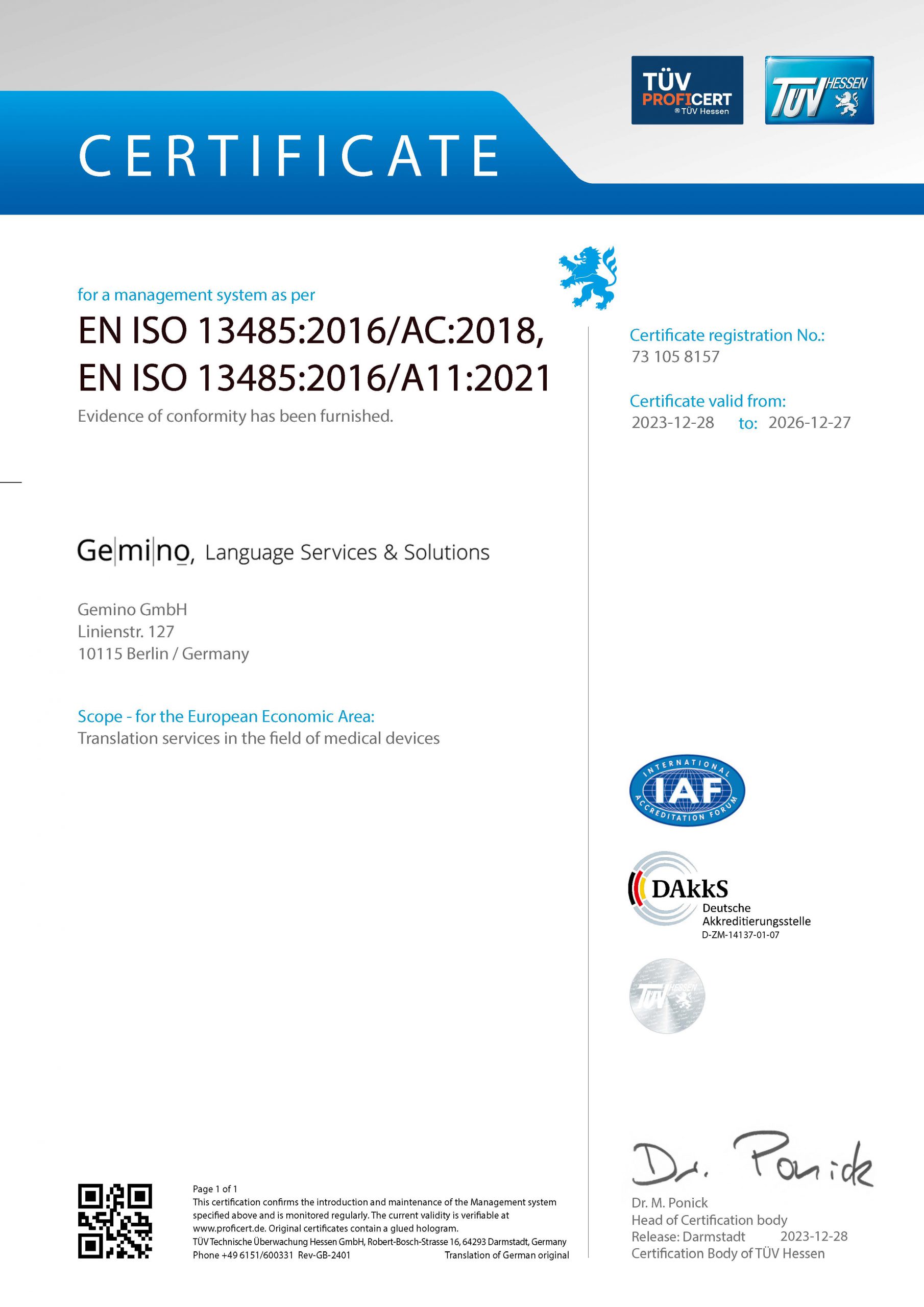“To us, quality means always delivering first-rate service
and offering each client what they really need.”
Who at Gemino could answer the most important questions about quality better than the boss?
Christian, where do you see Gemino’s strengths in quality management?
I think one of our great strengths is our ability to re-assess risks – to quickly adapt processes when conditions change and then still always achieve the desired result.
I call this “managing the unexpected”. Because even with standardized workflows, new challenges often arise during the course of the project, or specifications change.
So quality requires flexibility?
It does, too. The decisive factor is the awareness that we are in a permanent improvement process. We scrutinize our processes at every new challenge. The auditor, who carries out the ISO 9001 and ISO 17100 audits at our company, emphasized several times that one can clearly see in conversations with our employees that this awareness is lived at our company. I was particularly pleased with this feedback. It shows that the continual improvement process at Gemino does not just exist on paper.
What does “quality” mean to you in general?
Simply put, quality is when the end result at least matches the clients’ expectation. Or, more precisely: a result that meets the clients’ goal in communicating.
We have to ask ourselves who is to be reached and what is really to be achieved by a translation. This does not always have to be the expectations of the person who orders the service. In the case of a marketing brochure, for example, the translation is aimed at our clients’ customers. Quality is when the translation is ideally suited to the intended use. This is not necessarily self-explanatory for all content.
So what do you base quality on?
The criteria arise from the question that we have to ask ourselves anew with every project: “What does our client really need here?”
Of course, the main focus is on the quality of the translation in terms of content and language. Still, the detailed intended use should also be considered in this requirement.
Two examples: Is the text to be used along with a product and must it therefore be translated with a high degree of accuracy to be correct and consistent in every respect? Or is the objective of the translation rather to rapidly make the content accessible to someone who does not speak the language? In this case, a quick result would be more important than the highest possible level of accuracy.
This is where other aspects of quality come into play: reliably carrying out a process within the given time frame and/or within the required budget.
This raises further questions in terms of quality: Is it possible to integrate machine translation or GenAI? With which post-processing steps? Can processes be optimized? Which workflow steps are really necessary?
That’s why quality for us is always what the client really needs. There is no absolute or universal concept of quality.
If there is no absolute concept of quality, why does Gemino need its ISO certifications?
The ISO standards should be understood as a threshold to provide a certain structural framework for quality management. Ultimately, however, what matters is how they are implemented and lived out in practice. The decisive factor is whether a language service provider is able to deliver translations at a high quality level continuously. An ISO certification alone does not guarantee consistently high translation quality. It lays the foundation through sensibly defined, robust processes.
I must confess that I used to be skeptical. I primarily saw the risk of high additional costs due to the increased documentation effort required by certification, and I preferred to invest our capacities in concrete solutions. Today, I see that certifications are a very effective tool for us internally to constantly question the big picture. We regularly use it as an independent reference to check, as part of internal audits, whether our processes are being followed correctly and whether they are working. And the documentation is created quite incidentally in the work process.







